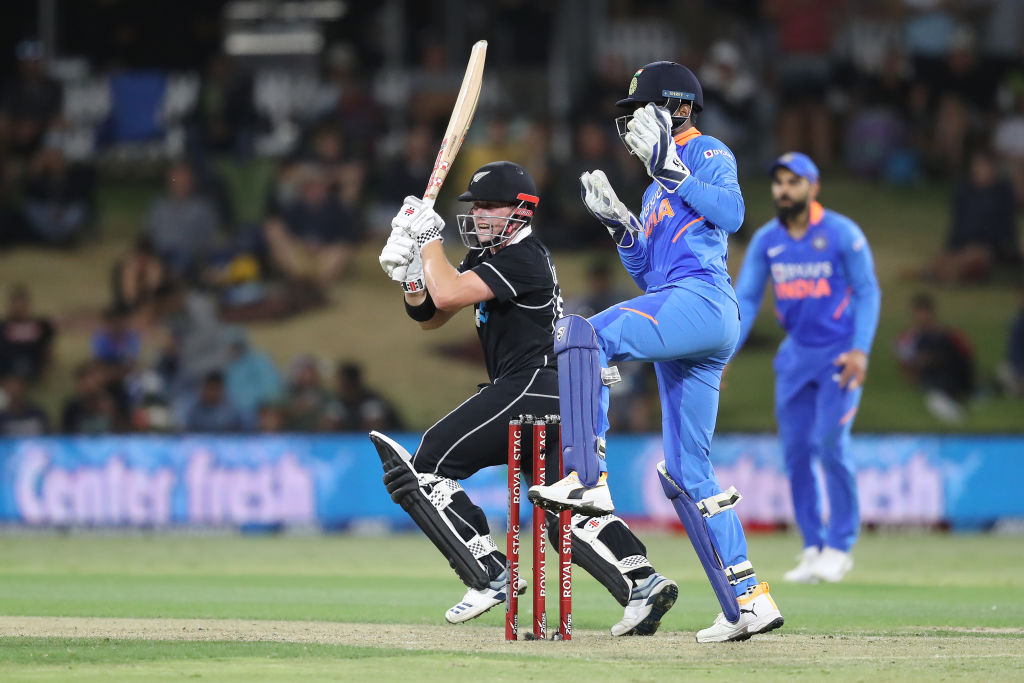IND vs NZ | 3rd ODI Takeaways - India’s workload management and New Zealand’s ODI gameplan triumphs T20Is

India’s one last chance to experiment in the series to avoid their first series whitewash under Virat Kohli was in shambles after a masterclass from New Zealand for the third straight time in the ODI series put the game to bed. It was the Kiwi bowlers along with the openers who got them home.
BCCI’s never paying heed to workload management
It is the first time that India would be playing a dead rubber in 17 bilateral ODI series under Virat Kohli. And what do they do in a dead rubber? They play both KL Rahul and Jasprit Bumrah despite playing the duo in every game of the tour so far. Bumrah just returned to international cricket in November after spending the latter part of 2018 after recovering from a stress fracture. Immediately, Kohli threw him under the bus with the home series against Sri Lanka, where they took the new ball. Later, he also played the dead-rubber ODI series against Australia, 2020 being a T20I WC year. If you think that was abysmal, Bumrah continued to play in all five T20Is against New Zealand despite not getting a rest. Meanwhile, Mohammad Shami got a well-deserved rest throughout the season, including in the T20I series when the result was already evident.
After India losing first two ODIs and the series became irrelevant, Kohli continued to play Bumrah in the last ODI. It looks like India are not learning from their past mistakes after they put Bhuvaneshwar Kumar in a similar position against West Indies. When the right-arm seamer was half-fit, the management decided to risk him for a home season, eventually ruling him out from cricket for the next 6 months. And, now, with Bumrah, India is heading on a similar trajectory. Another player who is suffering from the same fate is KL Rahul. Despite only becoming a regular wicket-keeper in the ODI series against Australia, the right-handed batsman has played all the games, despite Rohit Sharma and Kohli getting rest throughout the series. Well, it is not the first time that the BCCI have ignored workload management and it is certainly not the last time that they will pay a price for it too.
Kohli’s worst bilateral series has arrived
Virat Kohli, outswinger, dismissal, have been three words that have haunted the Indian fans in the past. First, it was England, where Kohli struggled outside the off-stump line against James Anderson and was caught out very quickly in the series. Now, against New Zealand, it has been a new weakness, one that has haunted the Indian skipper in two consecutive ODI series, the ball that gets in. Be it a leg-spinner, be it a seamer, Kohli has found a way to get bowled in the series. Just when he looked comfortable in the third ODI against the in-swinging delivery, he found himself in a hole with a bad shot, after countering the swing early. Kohli’s charge in the over against Tim Southee was suggestive that the Indian skipper was in no mood to mess around in the series after relatively two failures in the series. If in the second ODI, it was a peach of a delivery that got him out, in the third, it was ordinary batting that dismantled the skipper from the crease.
In the series, Kohli has only scored 75 runs, including a 51 in the opening game before he was bowled by Ish Sodhi. However, in the series ever since, he has not reached a score of more than 15 against the Black Caps. This is the worst return for Kohli in a bilateral series in five years, since the Carlton Mid ODI series. In that 2015 series, the Indian skipper only scored 24 runs, averaging eight every game against Australia and England. However, since then, the Indian skipper has looked in prime form, averaging above 50 in every series before he toured New Zealand. Kohli, this series, averaged only 25. For India though, Kohli’s bad form comes in a good cause with the likes of KL Rahul and Shreyas Iyer making amends with the bat in the middle order.
New Zealand are better in ODIs than T20Is
The point stands true on all grounds - performance, their ability to adapt midway in the innings and moreover, the balance. Just before the start of the T20I series, they were slated to win the series against India with a power-packed bowling attack and an explosive batting unit. However, all of that was just smoke and mirrors, and on paper, as the Indians blazed their way to a 5-0 series victory of the hosts. The real treat for the home fans was awaiting them in the ODI series, with New Zealand masterclass in all the three games. After the first ODI wins, the Kiwi tail was wagging for a whitewash victory over the Indian side, the first since 1989 for the tourists. In the third ODI too, it was evident that the Kiwi attack was more suited to the ODI conditions, with the first ten overs going in their favour and a struggling Virat Kohli, thanks to the swing factor. And, moreover, with the bat, the opening partnership of Martin Guptill and Henry Nicholls is one of the best opening wicket partnerships for New Zealand across formats. The duo - like ice and fire - took the attack to the Indian bowlers with extravagant stroke-making.
Added to that, unlike the Munro-Guptill pair, which goes one-dimensional, where the openers are just looking to attack every delivery, this pair offers more stability. The middle order, led by Kane Williamson and Ross Taylor have stabilised the run-chases for the Kiwi side, which was one of their weaker pursuits in the T20I format. To top it off, Colin de Grandhomme is one of New Zealand’s prized assets and his best format is the ODIs, where he is more than handy for the team, unlike T20Is.
